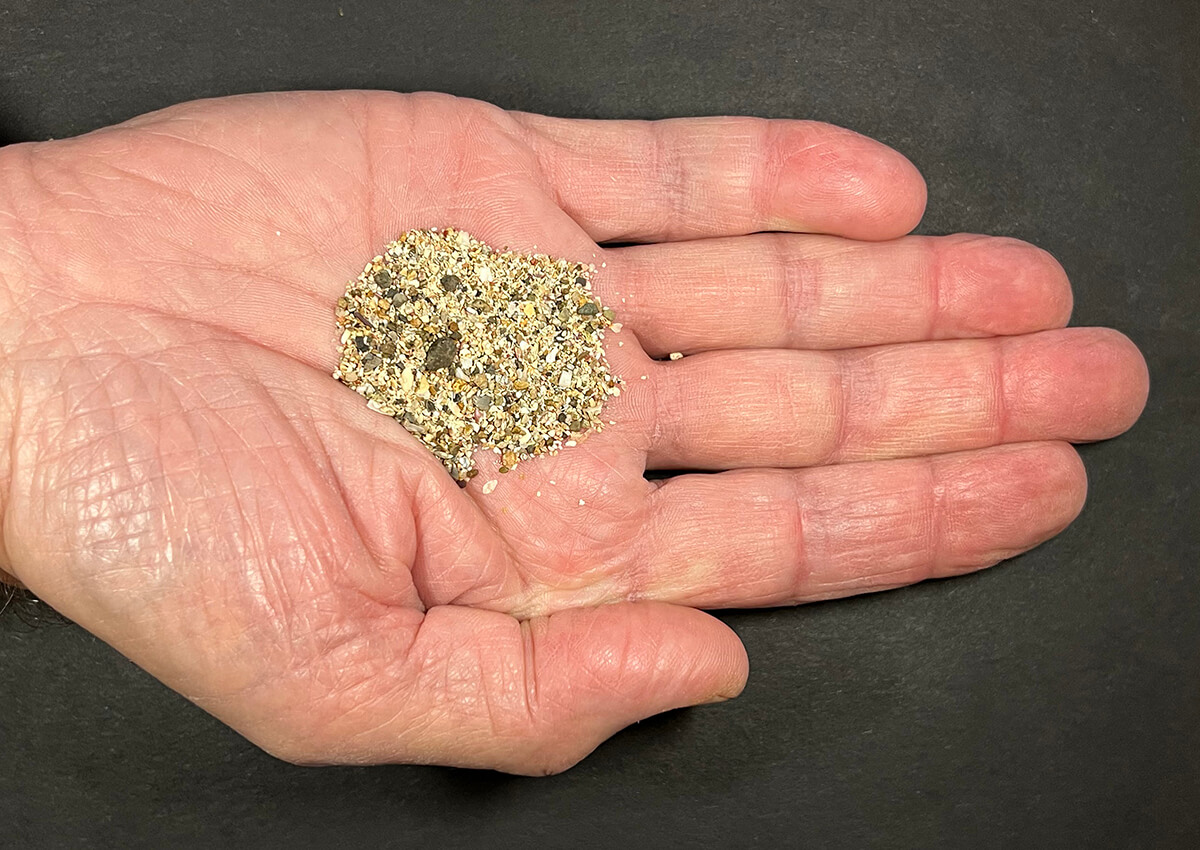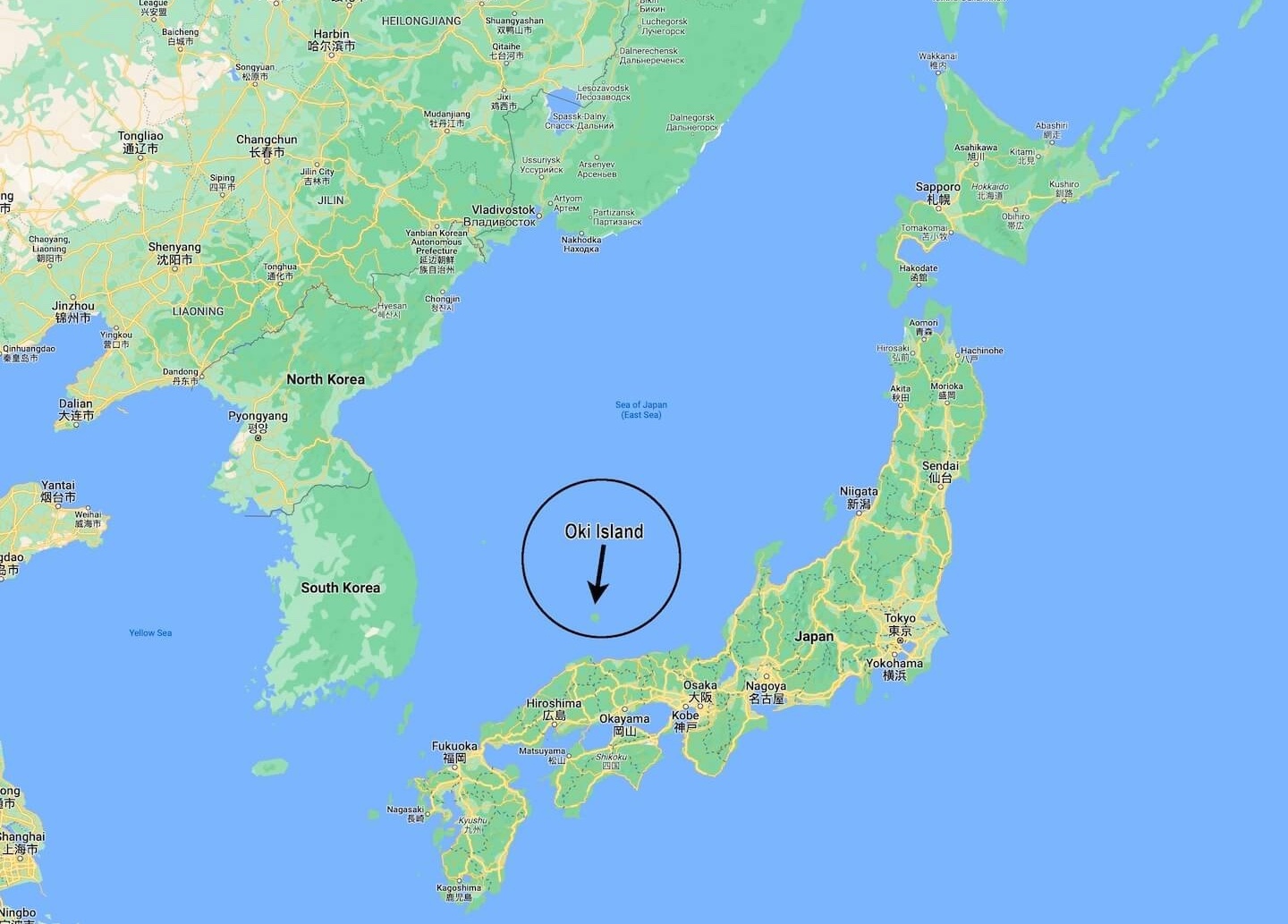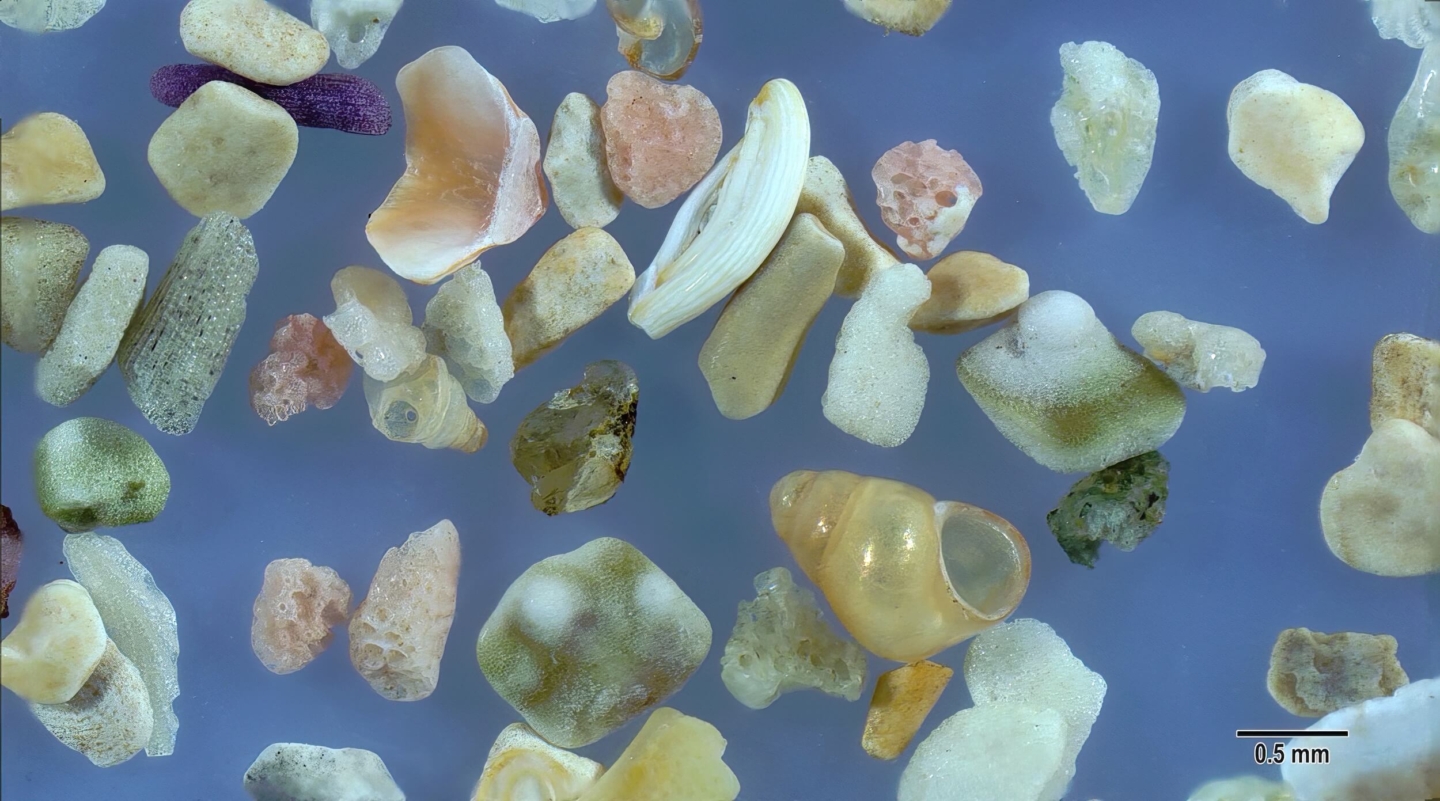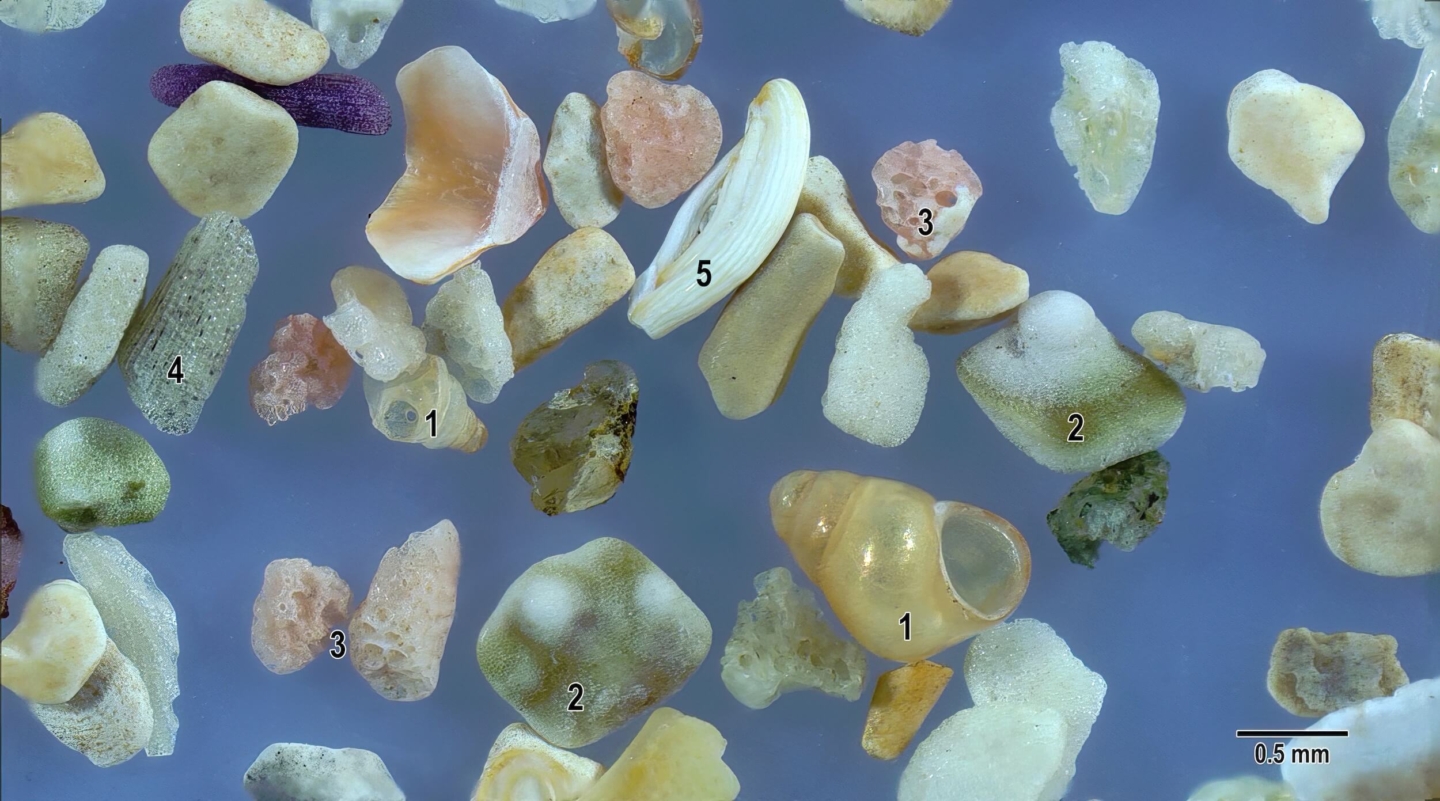Nakamura Beach
Originally part of the Asian mainland, the volcanic Oki Islands separated from the Asian mainland 10,000 years ago. Four of 180 islands that make up the archipelago are inhabited. Known for their natural beauty and scenic coastlines, Oki Islands are currently classified as a UNESCO Global Geopark.
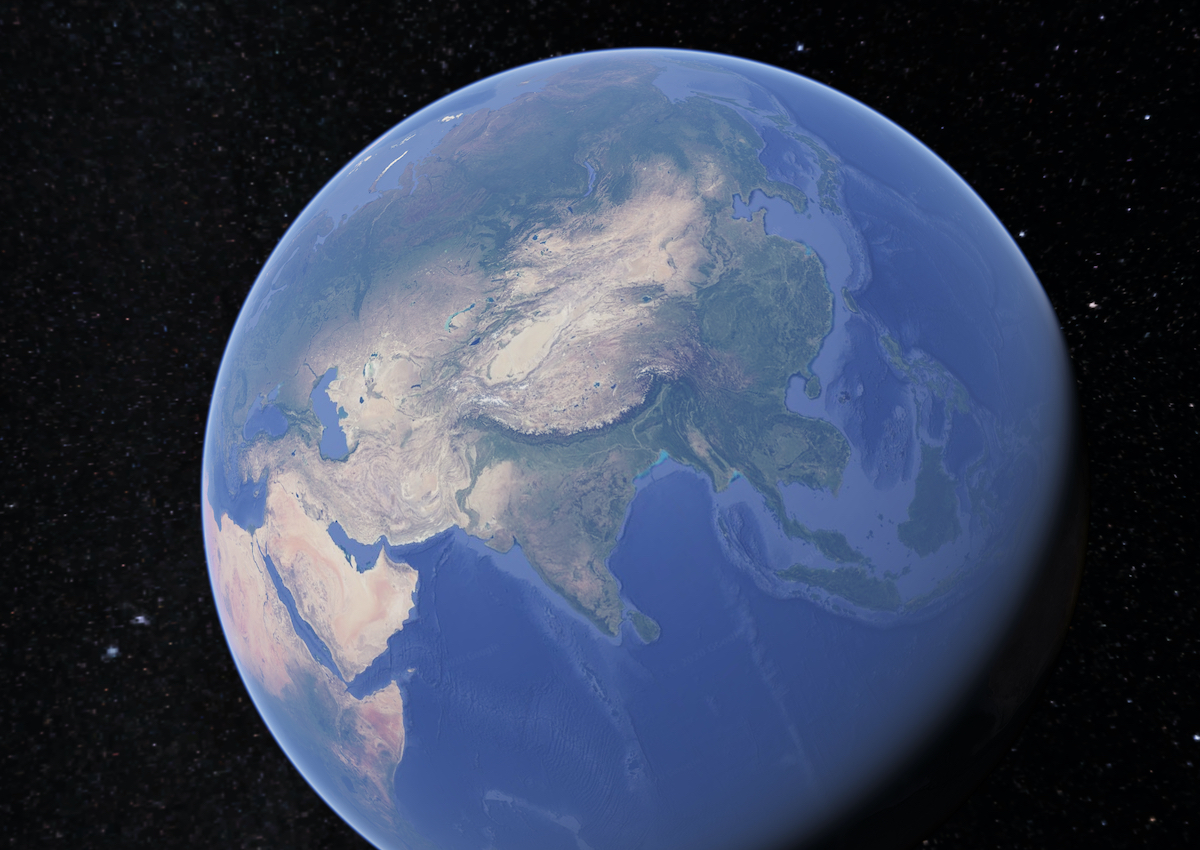
Virtual Sand Tour
Explore an interactive map of Oki Island.
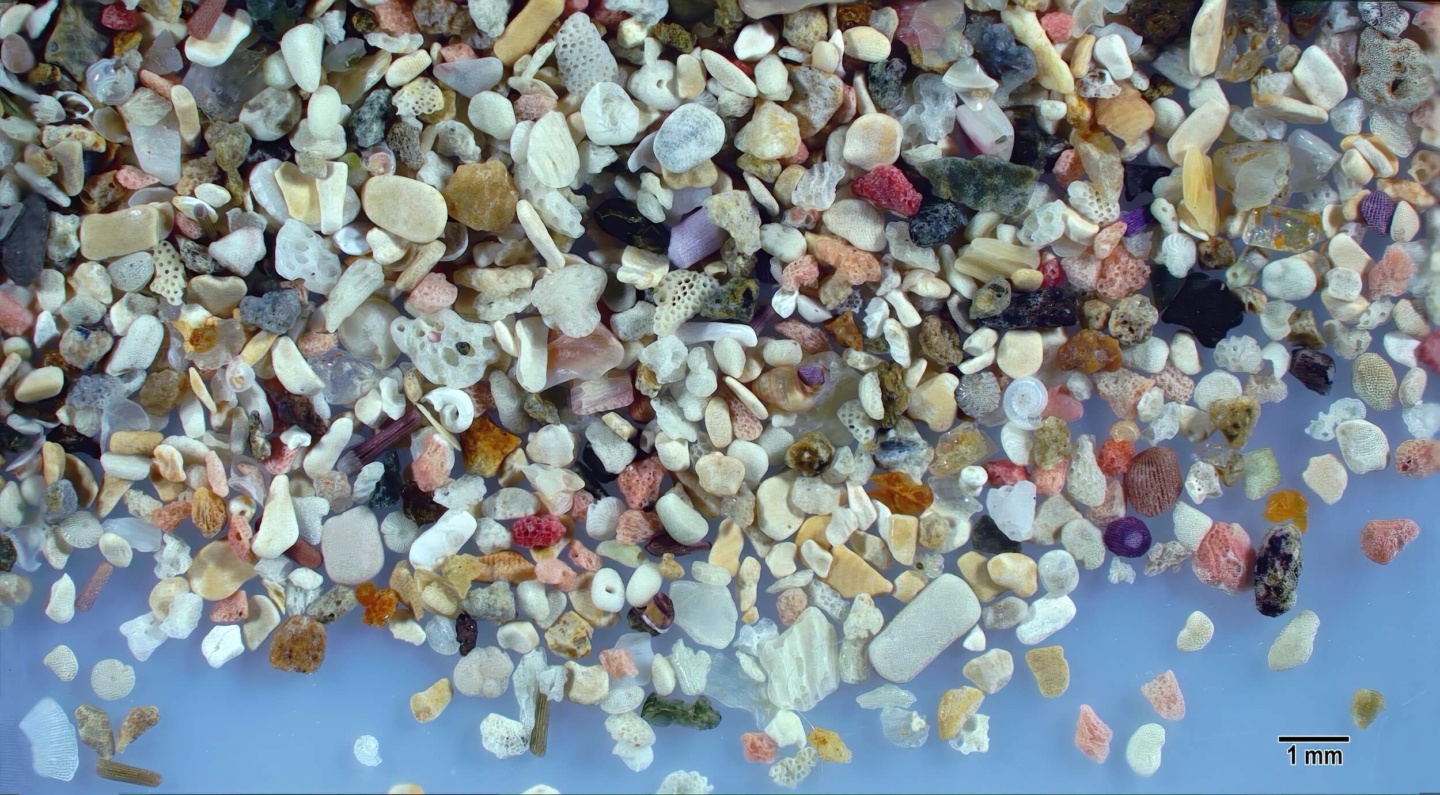
Colorful mixture of sand grains representing a large spectrum of primarily marine fragments with an occasional spiral shell. A few dark gray and back grains are geological sand fragments.

This higher magnification of a portion of Figure 1 shows some of the details of biogenic sand grains. A white coiled tubeworm is present in the center. Several pink and red benthic foram grains with scattered openings are present. White bryozoan fragments with prominent parallel holes are present at 1 o’clock and 10 o’clock.
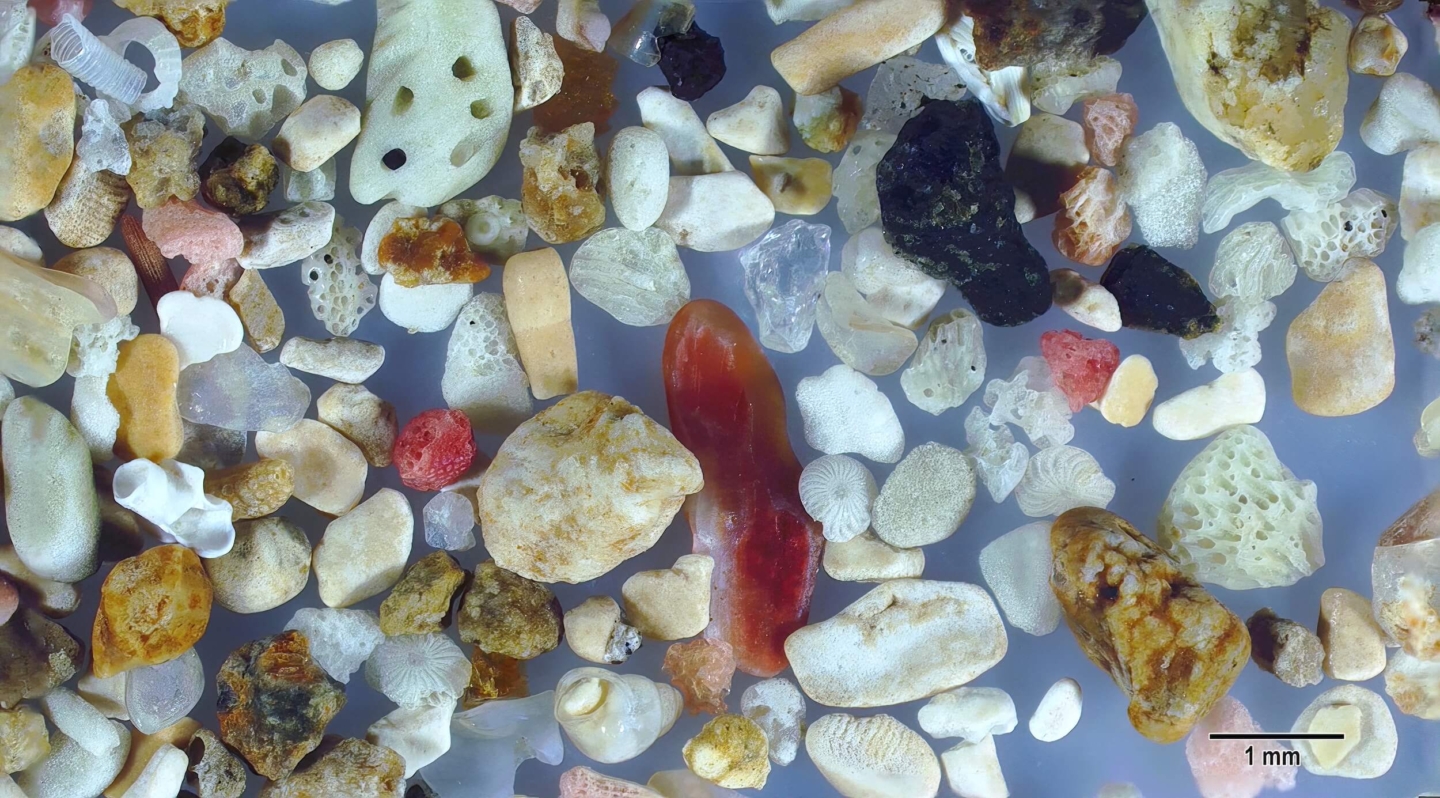
This mixture of sand grains includes black and mottled brown and tan geological sand grains along with white and light colored sand grains of marine origin. A small white circular foram with visible radial chambers is touching the right side of a large elongated red shell fragment in the center of the image. A translucent tube worm fragment with visible spirals is present in the upper left corner.
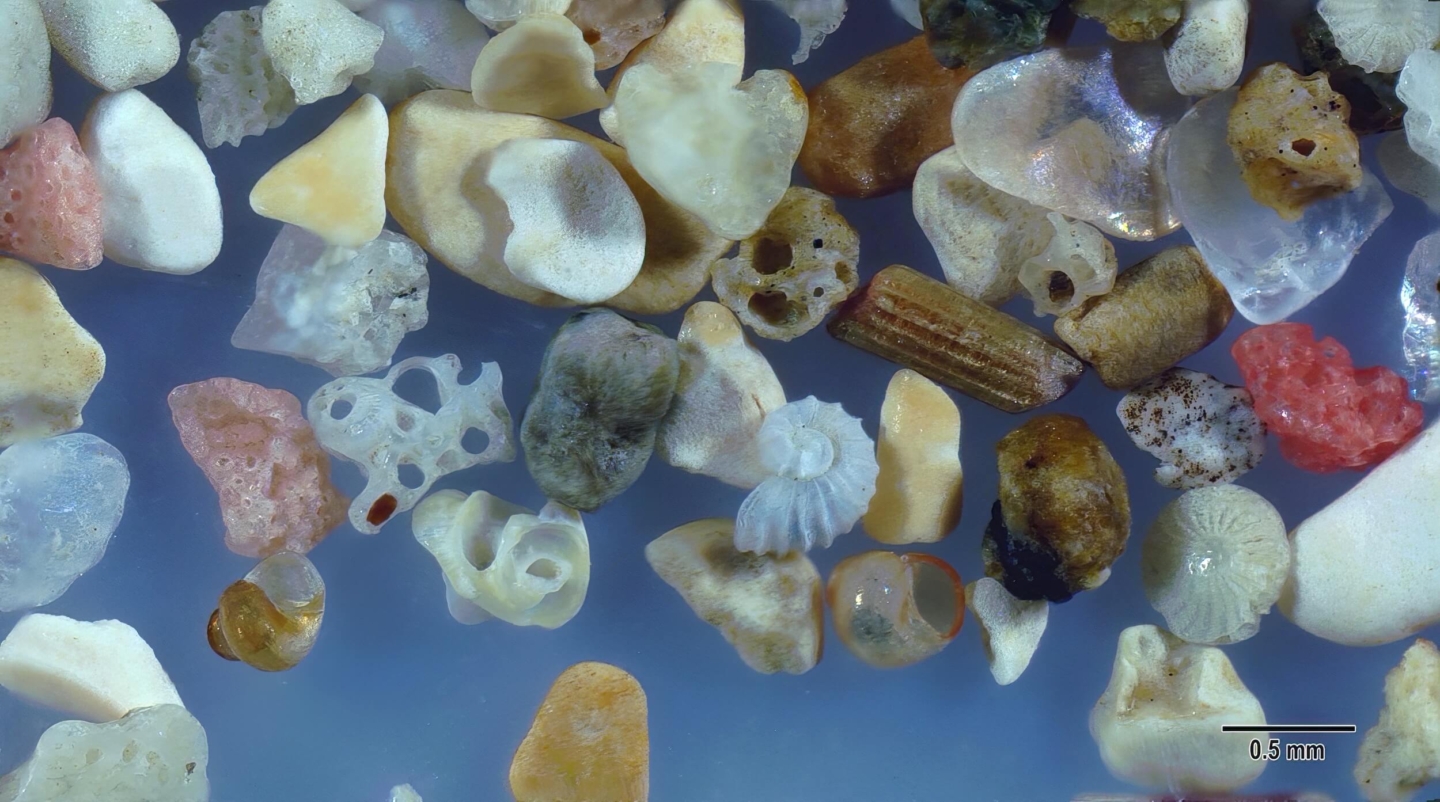
A white semi-translucent segmented sand grain in the center may be an unusual gastropod shell. Pink and red sand gains are fragments of benthic foraminifera organisms. A tan fragment of sea urchin spin with parallel groves is near the center and a symmetrically round off-white foram with visible radial chambers is present near the bottom right corner.
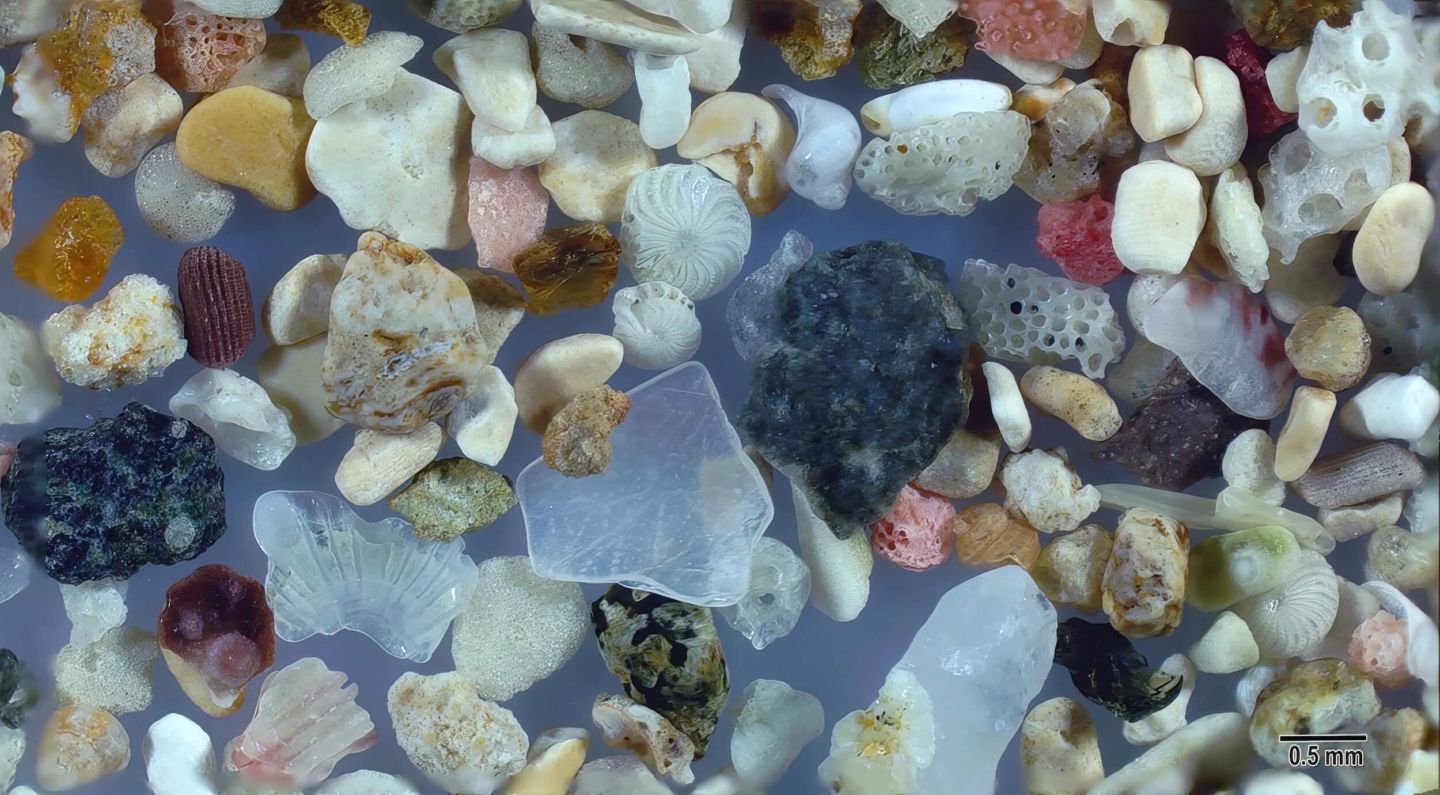
This microscopic view of sand is a mixture of geological sand grains and microscopic marine organisms.
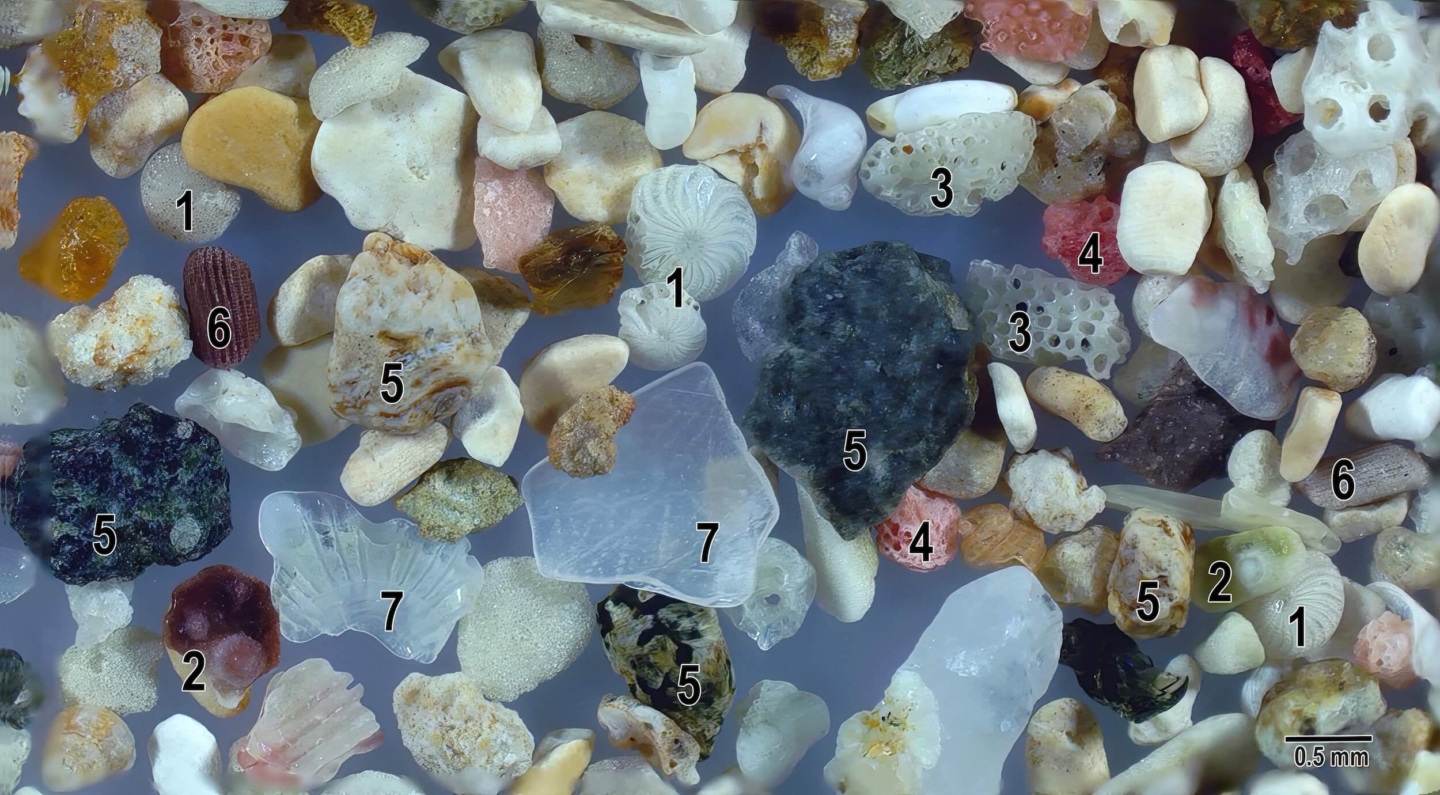
- Circular foraminifera tests with visible radial chambers.
- Fragments of sea urchin skeletal plates.
- Bryozoan sand grains.
- Benthic forams, probably Hemotrema rubum.
- Light and dark geological sand grains. Black grains may be basalt.
- Fragments of sea urchin spines.
- Delicate translucent fragments of bivalve shells.
